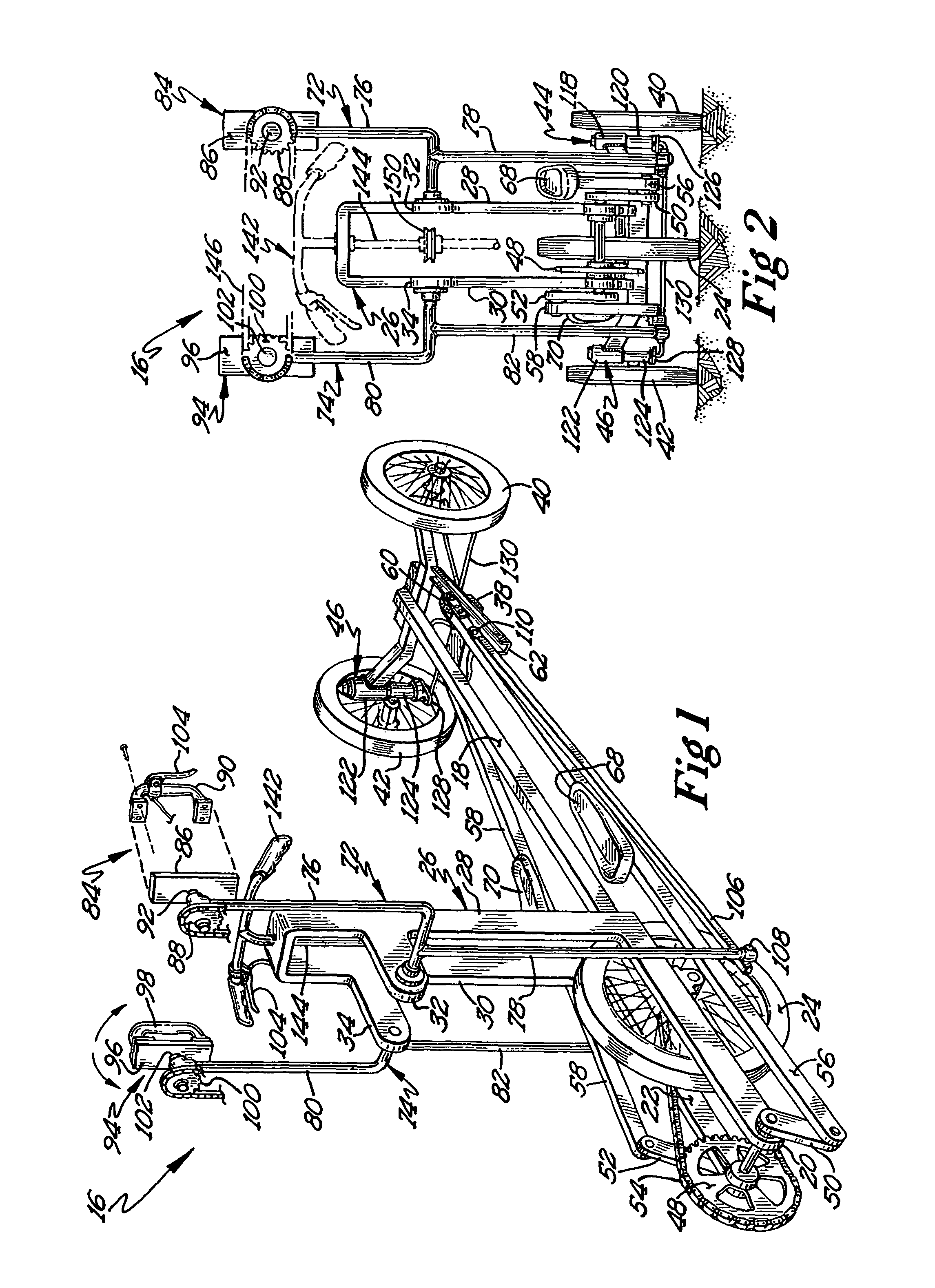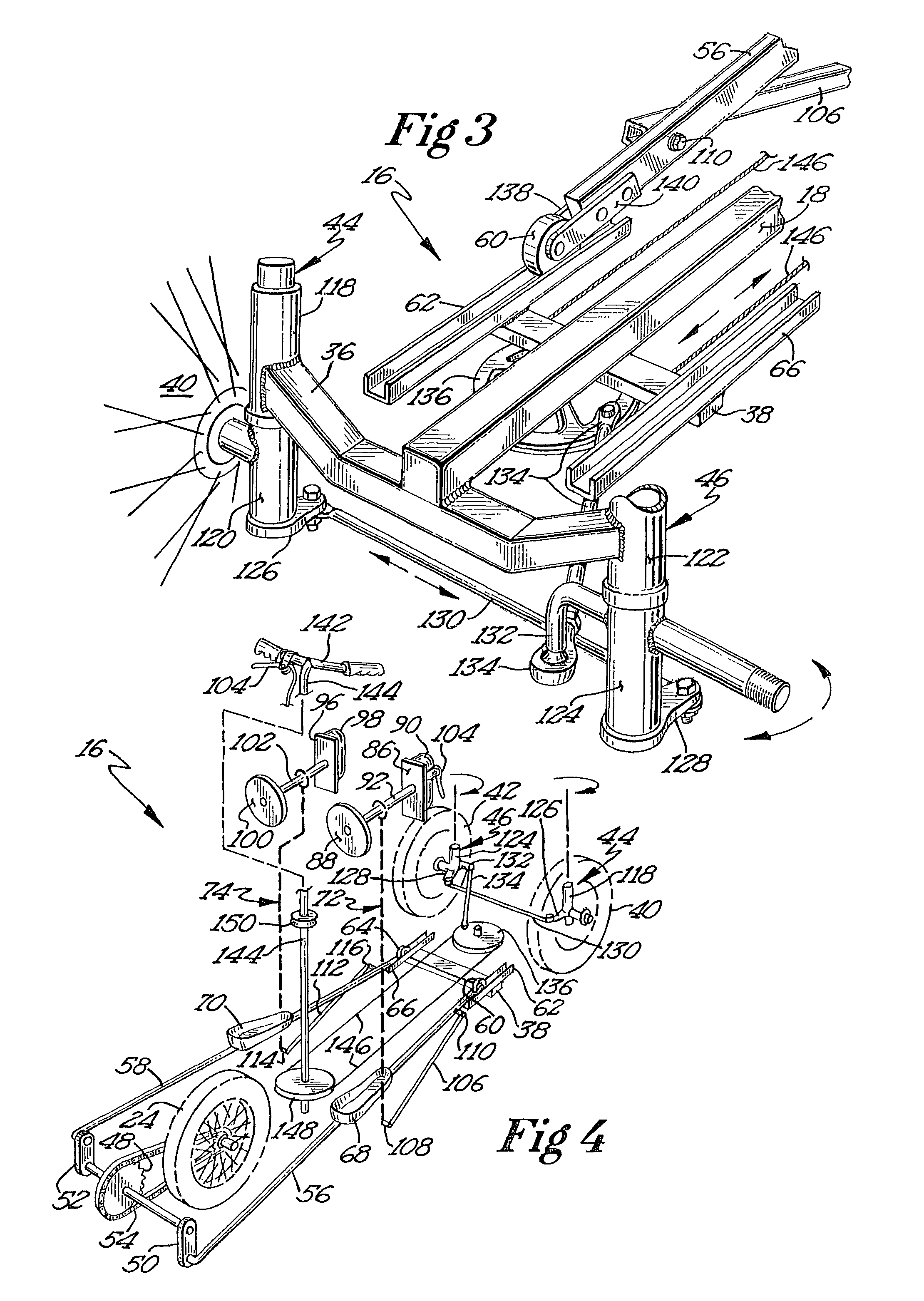Recreational vehicle with elliptical drive
a technology of elliptical drive and recreational vehicles, which is applied in the direction of foot-driven levers, transportation and packaging, cycles, etc., can solve the problems of riders having difficulty maintaining the balance of the vehicle, discomfort and fatigue, and limited exercise components, so as to achieve natural feel, reduce the risk of tipping, and the effect of smooth operation
- Summary
- Abstract
- Description
- Claims
- Application Information
AI Technical Summary
Benefits of technology
Problems solved by technology
Method used
Image
Examples
Embodiment Construction
[0042]Turning now to the drawings, there is shown in FIGS. 1-3 a manually powered wheeled vehicle 16 constructed in accordance with the present invention. Vehicle 16 has a substantially rigid structural frame including an elongate longitudinal frame member 18. Longitudinal forward frame sections 20 and 22 extend forwardly from opposite sides of frame member 18, forming a fork to accommodate a front wheel 24.
[0043]The frame further includes an upright column 26 having left and right upright column sections 28 and 30 on opposite sides of longitudinal frame member 18. Lever support sections 32 and 34 extend forwardly from upright sections 28 and 30, respectively.
[0044]A steering wheel mounting structure 36 is fixed to a rearward region of frame member 18 and extends generally transversely away from the frame member in opposite directions. A transverse support or cross member 38 is fixed to frame member 18 at a location slightly ahead of mounting structure 36.
[0045]Rear wheels 40 and 42...
PUM
 Login to View More
Login to View More Abstract
Description
Claims
Application Information
 Login to View More
Login to View More - R&D
- Intellectual Property
- Life Sciences
- Materials
- Tech Scout
- Unparalleled Data Quality
- Higher Quality Content
- 60% Fewer Hallucinations
Browse by: Latest US Patents, China's latest patents, Technical Efficacy Thesaurus, Application Domain, Technology Topic, Popular Technical Reports.
© 2025 PatSnap. All rights reserved.Legal|Privacy policy|Modern Slavery Act Transparency Statement|Sitemap|About US| Contact US: help@patsnap.com



